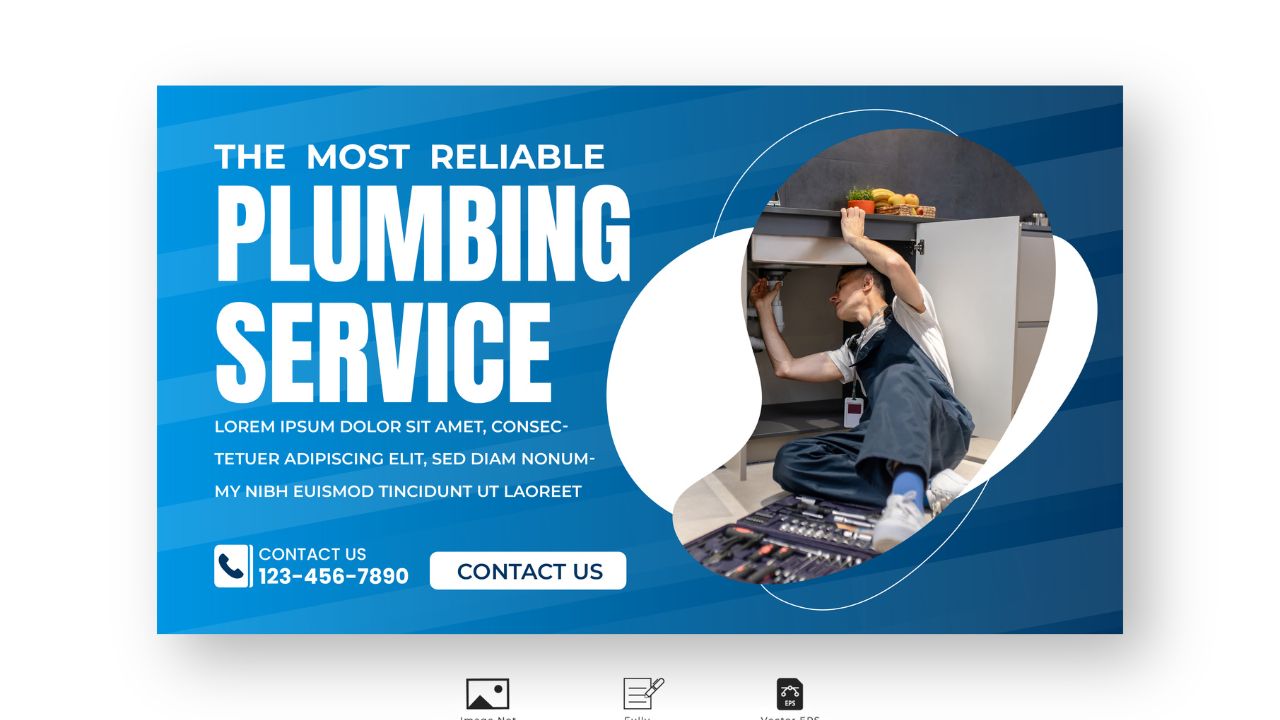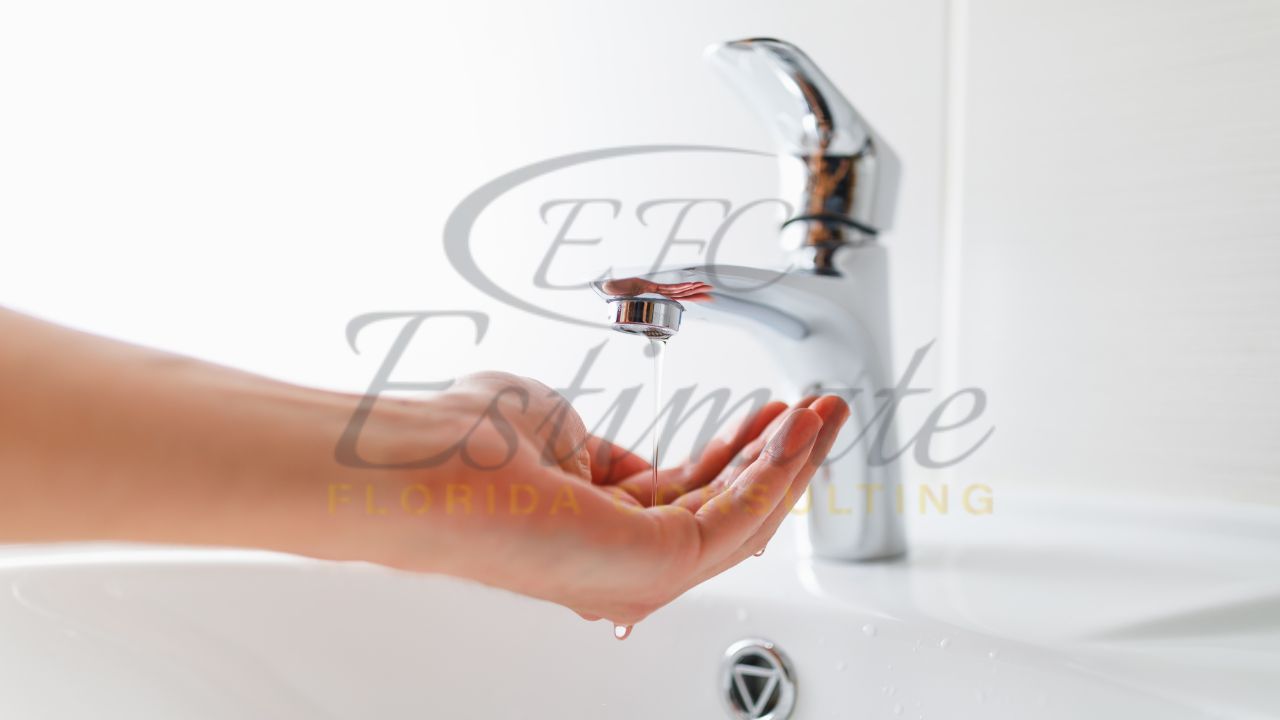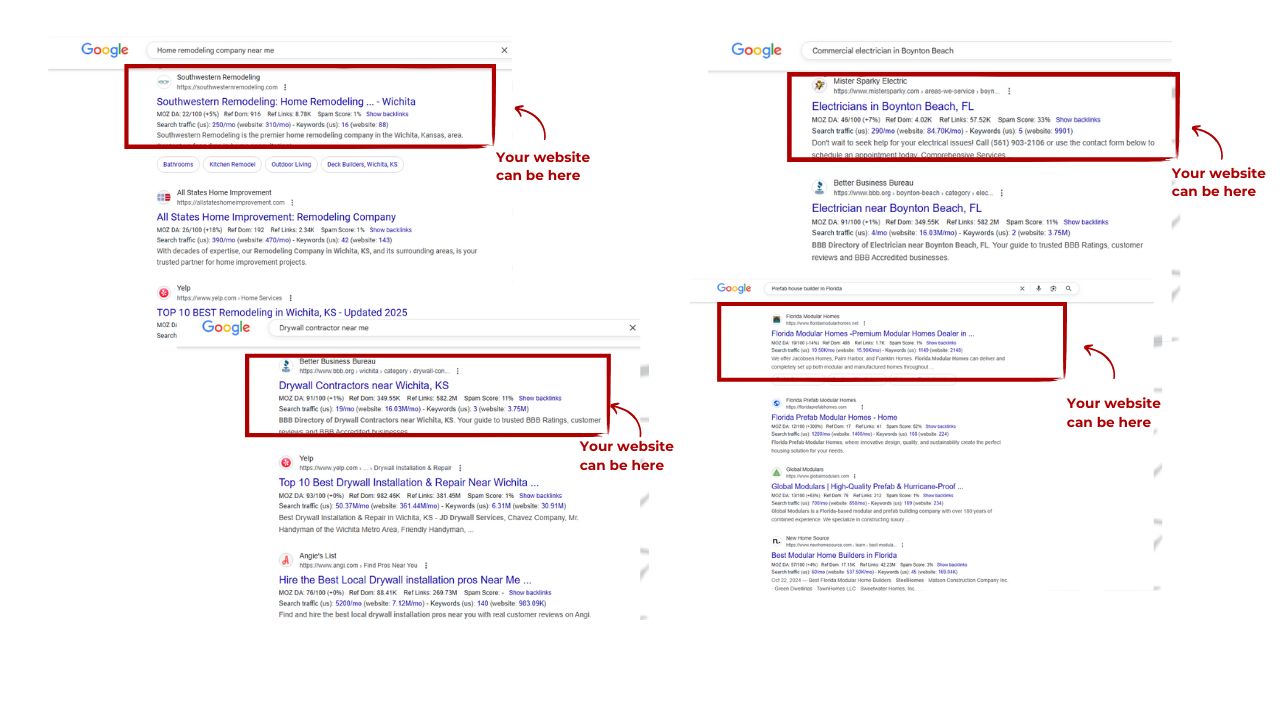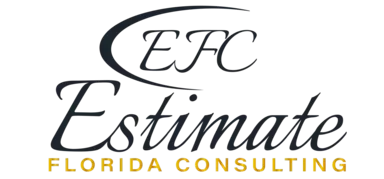- Homepage
- Plumbing
Top 7 Website Features That Build Trust with Plumbing Customers
Leading provider of web development services
For plumbing contractors, a website is more than a digital brochure—it’s a critical tool for establishing credibility and winning jobs. In an industry where clients invite you into their homes or businesses to fix urgent issues like burst pipes or sewer line problems, trust is paramount. A well-designed website with strategic features can showcase your professionalism, highlight your expertise, and make it easy for clients to choose you. Here are the top 7 website features that build trust with plumbing customers, helping you secure more residential and commercial projects.

1. Professional and User-Friendly Design
A clean, modern, and easy-to-navigate website instantly conveys professionalism, reassuring clients that you’re a reputable contractor.
Why It Builds Trust: A polished design signals attention to detail, while a cluttered or outdated site can make clients question your reliability.
Key Elements:
- Clean Layout: Use clear headings, ample white space, and high-quality images of your work (e.g., pipe repairs or water heater installations).
- Intuitive Navigation: Ensure menus are simple, with links to key pages like “Services,” “About Us,” and “Contact.”
- Mobile Responsiveness: Optimize for smartphones, as over 60% of plumbing searches occur on mobile devices.
Example: A sleek website with a clear “Emergency Plumbing Services” button encourages a homeowner to call for a late-night leak, trusting your professional presentation.
Consequence of Skipping This: A poorly designed site can deter 50% of visitors, who may assume your plumbing work is equally subpar.
Cost Estimate: Professional website design costs $1,000-$5,000 but can increase conversions by 20-30%.
Pro Tip: Use a consistent color scheme and logo that align with your branding to reinforce professionalism.

2. Customer Testimonials and Reviews
Displaying authentic client testimonials and reviews builds credibility by showcasing real-world success stories.
Why It Builds Trust: Potential clients trust peer feedback more than self-promotion, with 90% of consumers reading reviews before hiring a service provider.
Key Elements:
- Authentic Quotes: Feature specific, detailed testimonials about successful fixes for issues like clogged drains or low water pressure.
- Star Ratings: Integrate reviews from platforms like Google or Yelp, showing 4-5 star ratings prominently.
- Before-and-After Photos: Pair reviews with visuals of completed projects, like sewer line repairs, to add credibility.
Example: A testimonial praising your quick response to a sump pump failure convinces a business owner to hire you for a commercial plumbing project worth $5,000.
Consequence of Skipping This: Without reviews, clients may choose competitors with visible social proof, reducing your job bookings.
Pro Tip: Encourage satisfied clients to leave reviews on Google My Business and feature them on a dedicated “Testimonials” page.
Grow Your Website’s Authority — Get Started with SEO Link Building Now!
3. Clear Contact Information and Accessibility
Making it easy for clients to reach you demonstrates reliability and openness, key factors in building trust.
Why It Builds Trust: Clients facing emergencies like burst pipes or sewer smells need immediate access to your services, and clear contact options reassure them you’re available.
Key Elements:
- Prominent Contact Details: Display your phone number, email, and physical address in the header, footer, and a dedicated “Contact Us” page.
- Click-to-Call Buttons: Enable mobile users to call with one tap, especially for emergency plumber services.
- Live Chat or Contact Forms: Offer real-time chat or forms for scheduling quotes, capturing leads 24/7.
Example: A homeowner finds your 24/7 emergency number on your website’s homepage and hires you for a $1,500 pipe repair, trusting your accessibility.
Consequence of Skipping This: Hard-to-find contact information frustrates clients, driving them to competitors with easier access.
Cost Estimate: Adding live chat or forms costs $100-$500, boosting lead capture by 15-25%.
Pro Tip: Include a map with your service area to clarify where you operate, enhancing local trust.
4. Detailed Service Pages with Expertise
Dedicated pages outlining your services showcase your expertise and reassure clients you can handle their specific needs.
Why It Builds Trust: Detailed service descriptions demonstrate your knowledge of plumbing maintenance, from water heater installation to backflow prevention, building confidence in your capabilities.
Key Elements:
- Specific Service Pages: Create pages for services like pipe repairs, drain cleaning, or commercial plumbing, using LSI keywords like “plumbing code compliance.”
- Case Studies: Highlight successful projects, such as fixing mold growth caused by a leaky pipe, with technical details.
- Certifications: Display licenses and certifications (e.g., for trenchless sewer repairs) to prove expertise.
Example: A detailed page on “Water Efficiency Upgrades” attracts a property manager seeking low-flow fixtures, securing a $10,000 contract.
Consequence of Skipping This: Vague or missing service details make clients doubt your ability to handle complex issues, reducing inquiries.
Cost Estimate: Service page development costs $200-$1,000 but can increase conversions by 10-20%.
Pro Tip: Use high-quality images or videos of your work to visually demonstrate your expertise
Get 5 New Projects in the Next 7 Days With Our System
5. Transparent Pricing and Quote Tools
Offering transparent pricing or online quote tools builds trust by showing honesty and reducing uncertainty.
Why It Builds Trust: Clients fear hidden costs, and clear pricing for services like drain cleaning or water heater maintenance reassures them of fair dealings.
Key Elements:
- Pricing Guidelines: List starting prices (e.g., $100-$300 for drain cleaning, $1,000-$4,000 for water heater installation) with disclaimers about variable costs.
- Quote Forms: Provide forms where clients can input project details (e.g., type of repair, property size) for personalized estimates.
- Cost Calculators: Offer interactive tools for rough estimates, enhancing user engagement.
Example: A homeowner uses your quote form to estimate a $2,000 sewer line repair, choosing you for your transparent pricing over a competitor’s vague estimates.
Consequence of Skipping This: Lack of pricing information can deter 40% of clients, who may assume you’re overpriced or unreliable.
Cost Estimate: Adding pricing pages or quote tools costs $200-$1,000, increasing conversions by 15-30%.
Pro Tip: Update pricing regularly and note that quotes are estimates, subject to on-site assessment.
6. Local SEO Optimization
Optimizing your website for local SEO ensures clients in your service area find you, building trust through local relevance.
Why It Builds Trust: Clients prefer local contractors they can rely on for quick responses, especially for emergencies like frozen pipes or sump pump issues.
Key Elements:
- Local Keywords: Use terms like “plumber in [city]” or “local plumbing services” in content, meta tags, and headers.
- Google My Business Link: Integrate your profile with your website, showing your address, hours, and reviews.
- Service Area Page: List cities or zip codes you serve, reinforcing your local presence.
Example: A website optimized for “Chicago emergency plumber” ranks on Google’s first page, attracting a $3,000 commercial plumbing job from a local business.

Consequence of Skipping This: Without local SEO, you miss out on clients searching for nearby plumbers, losing jobs to competitors with better visibility.
Cost Estimate: Local SEO optimization costs $500-$2,000 initially but can boost local inquiries by 20-40%.
Pro Tip: Claim and optimize your Google My Business profile to enhance local rankings and trust.
Professional Web Developer For Your Website?
7. Educational Content and Resources
Providing educational content, such as blogs or FAQs, positions you as a trusted expert, encouraging clients to choose your services.
Why It Builds Trust: Clients value contractors who offer insights on preventing issues like high water bills or mold growth, viewing them as knowledgeable and reliable.
Key Elements:
- Blog Posts: Write articles on topics like “How to Prevent Clogged Drains” or “Signs You Need Water Heater Maintenance.”
- FAQs: Address common questions, such as “What causes low water pressure?” or “How to avoid pipe corrosion.”
- Guides or Videos: Offer tutorials on simple DIY fixes or maintenance tips, showcasing your expertise.
Example: A blog post on “Preventing Frozen Pipes” attracts a homeowner who hires you for a $1,500 pipe insulation project, trusting your expertise.
Consequence of Skipping This: Without educational content, you miss opportunities to engage clients and build long-term trust, reducing repeat business.
Cost Estimate: Blog or FAQ development costs $200-$1,500 but can drive 10-20% more traffic and leads.
Pro Tip: Publish new content monthly to keep your site fresh and improve SEO rankings.
Additional Trust-Building Features
- About Us Page: Share your team’s story, licenses, and experience to humanize your brand and build rapport.
- Secure Website (HTTPS): Use SSL certificates to protect client data, reassuring users their information is safe.
- Portfolio Gallery: Showcase completed projects, like bathroom renovations or commercial plumbing installations, to visually prove your skills.
Conclusion: A Trustworthy Website Wins More Plumbing Jobs
A professional website with these top 7 features—professional design, testimonials, clear contact info, detailed service pages, transparent pricing, local SEO, and educational content—builds trust with plumbing customers and drives job bookings. By investing in a website that showcases your expertise, accessibility, and reliability, you can attract more clients, from homeowners needing pipe repairs to businesses requiring commercial plumbing services. A website costing $1,000-$5,000 can yield significant returns by increasing inquiries, enhancing credibility, and securing high-value projects.
For plumbing contractors, a trustworthy website is a competitive edge in a digital-first world. Prioritize these features, work with a skilled web designer, and watch your business grow as clients choose you for your professionalism and transparency. Start building or upgrading your website today to unlock its full potential for winning more jobs.
Frequently Asked Question
Even minor leaks can waste thousands of gallons of water annually, raise your water bill, promote mold growth, and gradually damage cabinets and fixtures. Treating it early prevents bigger issues and costly repairs later.
Slow drains are often caused by soap scum, hair, grease, or other debris building up inside the pipes. DIY solutions like plunging or using a drain snake work for minor clogs. If multiple drains are slow or there are gurgling sounds, it could indicate a deeper issue in the sewer line—call a professional plumber.
Low pressure can be a sign of mineral buildup, failing pipes, hidden leaks, or issues with the main water supply. If cleaning aerators and checking visible pipes doesn’t restore pressure, a professional inspection is recommended to avoid severe pipe damage.
Discolored water typically means pipe corrosion or sediment in your water heater. Run the water for a few minutes. If the problem persists, have a plumber inspect your pipes and test the water quality. In older homes, upgrades to PEX or copper piping may be needed.
Water heaters should be flushed at least once a year to remove sediment. Units older than 10 years should be inspected regularly for leaks or corrosion. If you notice lukewarm water or strange noises, it may be time for repair or replacement.

